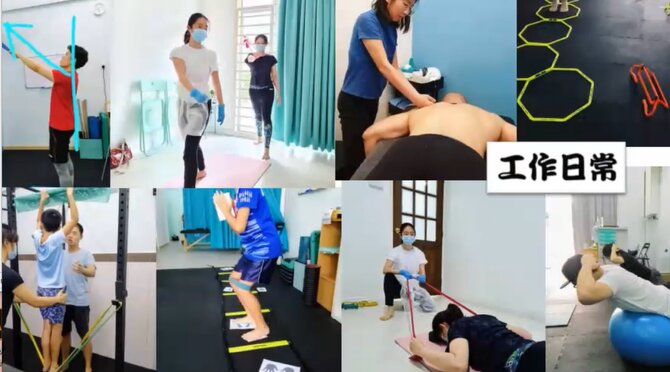Reported by: Lee Ai Lin Sr3ScB
When it comes to the healthcare industry, medicine, pharmacy and dentistry first come to mind, but have you ever thought of physiotherapy? On 9th August, we invited alumna Ms How Kuan Ling to share her experience as a physiotherapist. She specialized in sports rehabilitation and musculoskeletal cases at Precise Rehab Sdn. Bhd. as a Training, Research & Development Director.
Physiotherapy is not just massage. Physiotherapists are professionally trained to aid people with health conditions through physical methods such as exercise and electrotherapy. They also need to have great communication skills, especially for younger and older people. There are 4 main branches of physiotherapy, videlicet Geriatric Physical Therapy, Sports Physical Therapy, Orthopedic Physiotherapy and Pediatric Physical Therapy. Each branch focuses on different types of patients, thus physiotherapists are specifically trained to interact with these patients.
Daily Life of a Sports Physiotherapist
Ms How has always wanted to pursue a career in healthcare after seeing a paramedic assisting an old man who stayed at her place. After a campus visit to the International Medical University (IMU), her interest in the field was further piqued, especially towards chiropractic. However, the tuition fees were burdensome. Thus, she found a more cost-friendly option in the Universiti Tunku Abdul Rahman (UTAR), Physiotherapy. She interned as an administrative assistant at a chiropractic centre owned by her neighbour during her pre-university days to see the life of a chiropractor first-hand to compare with a physiotherapist.
Although Ms How obtained a Unified Examination Certificate (UEC), she took foundation in science at UTAR as her grades did not meet the requirements. At first, like most people, she thought that her Senior Middle 3 year was a waste of time. Looking back, she treasured the memories with her friends that time and advised us to be active in school activities. As she was not fluent in English, Ms How was quite hesitant to communicate with her classmates, to which she advised us to speak bravely as no one will make fun of us. Her first year in the university was a time of adversity as the more theory-based studies had myriads of information to remember. At one point, she debated whether she took the right path as science was not her strong point. But then she thought again and talked to herself, any other professional occupation is going to be challenging, giving up is not an option.
During her internship, Ms How encountered a tough situation when an elderly man provided information contrary to what is written in the report. Thus, she had to ask deeper questions and further examine to identify the real cause for his condition. She then showed us a picture of her lecturers of whom she was grateful for their strictness and professionalism. “It was hard to pass their classes, they were very strict to us, but because of that I was able to fully understand what I learnt,” said Ms How reminiscing the good old days.
Ms How proceeded to show us a group photo of a marathon’s first aid team which she was a part of. She appreciated the opportunity to work with others in the healthcare profession, such as general practitioners and dieticians. “No profession is less important than the other,” said Ms How sternly. She also volunteered for several visits to convalescent and old folks homes. There was an old man in one of the homes who had mobility problems. When she was assisting him, the full-time physiotherapist there told her not to pay heed to him as he had been like that for years. Ms How was shocked at their attitude but still determined to help the man. “We must treat any work allocated to us with all our might!”.There were not any modern facilities and apparatus in the homes. That was where physiotherapists needed to be creative. During a visit, Ms How found a “deserted” Wii game console and engaged everyone there to play along. It was a fun method for them to socialise and exercise together.
 Ms How volunteering at the old folks home
Ms How volunteering at the old folks home



